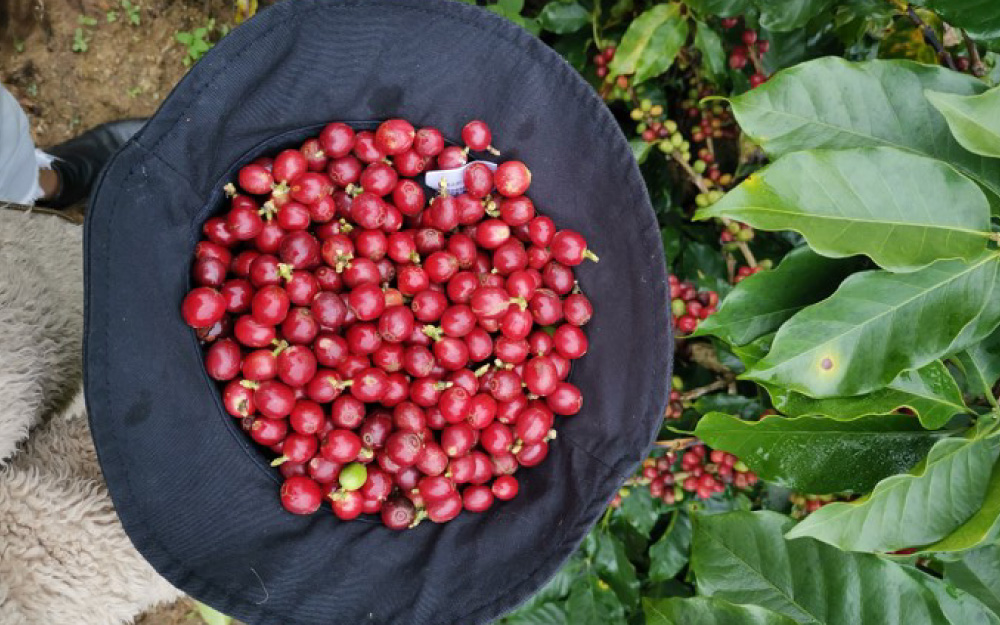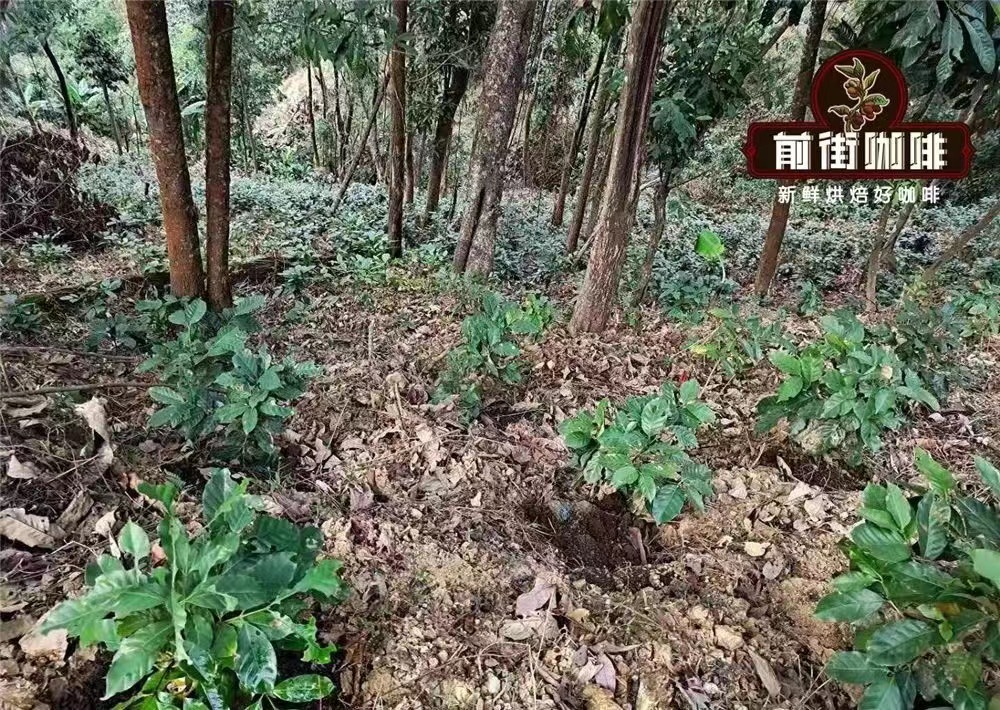The Development and change of Coffee Macro-environment Analysis on the Future Development trend of Coffee Market in Yunnan
Professional coffee knowledge exchange more coffee bean information please follow the coffee workshop (Wechat official account cafe_style)
For more boutique coffee beans, please add private Qianjie coffee on Wechat. WeChat account: qjcoffeex
I. Macro-environmental analysis
With the development of the times and the further change of people's concept of life, the coffee industry is also developing at a rapid speed. The promotion of urbanization and the construction of culture are the driving force for the development of coffee shops. Government policy support for college students to start a business. With the popularity of coffee culture and the rise of petty bourgeoisie sentiment, coffee shop is becoming an important place for people to communicate and enjoy themselves. its value lies in that it can not only provide consumers with high-level spiritual enjoyment, but also express the atmosphere, culture and life pursuit.
II. Industry analysis
In many big cities in China, cafes have become quite common, and many young people have become enthusiastic proponents of coffee. Coffee is consumed in Chinese cities, with an average annual coffee consumption of 4 cups per person. Japan and Britain are both world-famous tea culture countries and have developed into a huge coffee market. China, which has a strong tea culture, has broad coffee consumption potential and is becoming the largest coffee consumption market in the world.
Coffee (scientific name: Coffea arabica), also known as coffee tree, Arabica coffee, etc., is the national flower of Yemen. Before the 6th century in the park, Yemen was called Arab, so the coffee trees transported from them to other places were also called Arabian coffee trees. The name coffee comes from the Arabic Qahwah, which means plant drink. Later, coffee spread all over the world and was named after its place of origin, Kaffa. It was not officially named after coffee until the 18th century.

The world's first coffee tree was found in the Horn of Africa. Coffee cultivation began in the 15th century. For hundreds of years, Yemen in the Arabian Peninsula is the only coffee producer in the world, and the market demand for coffee is very strong. In the Yemeni port of Moka, when coffee is shipped out, it often needs to be protected by heavy troops. At the same time, Yemen has also taken various measures to prevent coffee saplings from being taken out of the country. Despite many restrictions, Muslims who made a pilgrimage to the holy city of Mecca secretly brought coffee saplings back to their hometown, so coffee soon took root in India. At that time, in Venice, Italy, countless merchant ships traded perfumes, tea and textiles with Arab merchants.
In this way, coffee spread to a wide area of Europe through Venice. Many European businessmen have become accustomed to drinking coffee. Later, small vendors peddling coffee appeared on the streets of many European cities, and coffee gained rapid popularity in Europe. In the 17th century, the Dutch introduced coffee to their colony of Indonesia. At the same time, the French began to grow coffee in Africa. Today, coffee has become the second largest trading product on the earth after oil! Among the countless legends of coffee discovery, there are two legends that people are most interested in talking about, that is, the story of shepherds and Arab monks.
Three major coffee growing areas in the world: Africa, Indonesia and Central and South America. Yemen is the first country in the world to produce coffee on a large scale as a crop. The mocha coffee in Yemen today is grown and processed in much the same way as it was hundreds of years ago. On most coffee farms in Yemen, coffee farmers still resist the use of artificial chemicals such as chemical fertilizers. Coffee farmers plant poplars to provide shade for coffee to grow. Coffee trees are planted on steep terraces to maximize the use of less rainfall and limited land resources. Yemeni mocha beans are still shipped in a bag made of straw, unlike chemical woven bags in other places.
Yemeni coffee has been cultivated for more than 2000 years. According to statistics, coffee is cultivated in 76 countries in the world. Coffee in China was first introduced in Taiwan in 1884. In 1908, overseas Chinese brought back large and medium seeds from Malaysia to Hainan Island. At present, the main cultivation areas are Yunnan, Guangxi, Guangdong and Hainan.
3. Development trend of domestic coffee in the future
Coffee industry is also the most sound and mature industry of market economy in the leading industry of Baoshan municipal government since the founding of New China. In order to better develop this industry, Baoshan has made a variety of attempts in this regard, including the launch of the Yunnan Baoshan Coffee World Project.
Baoshan, Yunnan is located in the low-latitude plateau, known as "one mountain is divided into four seasons, ten miles of different days," said, such a climate can be said to be very suitable for growing coffee beans. To tell you a figure, the output of coffee in Yunnan Province has reached 136000 tons, accounting for more than 95% of the national coffee output, and the export volume ranks the highest in the country, at 60700 tons.

Yunnan has good coffee growing conditions, but Qianjie believes that the main reason why the quality of Yunnan coffee beans has not yet reached the standard of "boutique coffee" may be: 1, it is a variety. Katim is mostly planted in Yunnan, which is not as superior as Tieka coffee in terms of breed. 2. Anaerobic treatment was used. This is a novel treatment, but it has masked the original flavor of coffee.
At present, Katim coffee is the most widely cultivated in the coffee producing areas of Yunnan. In addition, in Baoshan area, there are still a small number of iron pickup coffee and bourbon coffee. Although both Ironpickup and bourbon belong to Arabica species, they are very different in nature.
In 2013, Qianjie Coffee realized that good quality coffee could not do without variety, altitude and climate, so Lincang, near a mountain with an elevation of 1300m in Myanmar, set up its own coffee plantation belonging to Qianjie Coffee. And grow the oldest Arabica variety-iron pickup.

The difference between the iron pickup and the Katim variety is that the iron pickup, as one of the oldest coffee varieties, owns the gene of the pure Arabica variety, and because it has an elegant and clean flavor, it has always been recognized as a boutique coffee breed, but its disadvantage is its low yield.
Real boutique coffee, not only talk about processing and quality, variety is also very important. Qianjie hopes that through the change from the origin of the variety, everyone can drink Yunnan small grains of coffee beans with more flavor and better quality. At present, these home-grown Yunnan iron pickup coffee beans can be bought in Qianjie flagship stores and Qianjie coffee stores.

Important Notice :
前街咖啡 FrontStreet Coffee has moved to new addredd:
FrontStreet Coffee Address: 315,Donghua East Road,GuangZhou
Tel:020 38364473
- Prev

Hand-brewing Coffee tutorials and basic Coffee skills
- Next

Coffee can remove bad breath! The effect is better than toothpaste
The science of bad breath is also well studied, with the advent of mouthwash, breath fresheners and chewing gum. Now there is a new study, that is, we now often drink coffee, coffee contains substances to inhibit bad breath. A new study by Israeli scientists has found that coffee contains substances that inhibit bad breath, which may be used in mouthwash, breath fresheners or chewing gum in the future.
Related
- Beginners will see the "Coffee pull flower" guide!
- What is the difference between ice blog purified milk and ordinary milk coffee?
- Why is the Philippines the largest producer of crops in Liberia?
- For coffee extraction, should the fine powder be retained?
- How does extracted espresso fill pressed powder? How much strength does it take to press the powder?
- How to make jasmine cold extract coffee? Is the jasmine + latte good?
- Will this little toy really make the coffee taste better? How does Lily Drip affect coffee extraction?
- Will the action of slapping the filter cup also affect coffee extraction?
- What's the difference between powder-to-water ratio and powder-to-liquid ratio?
- What is the Ethiopian local species? What does it have to do with Heirloom native species?

